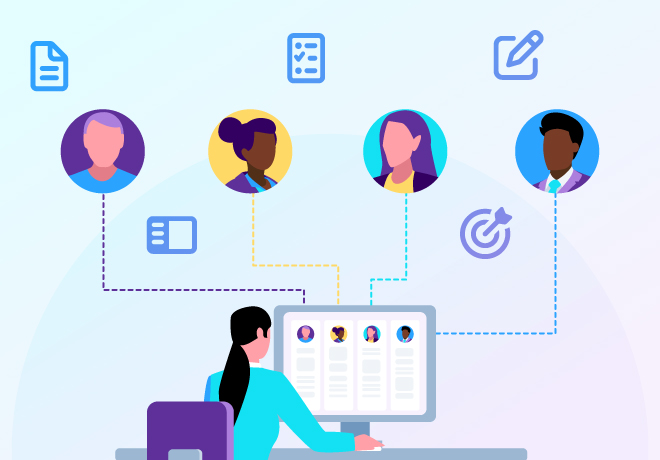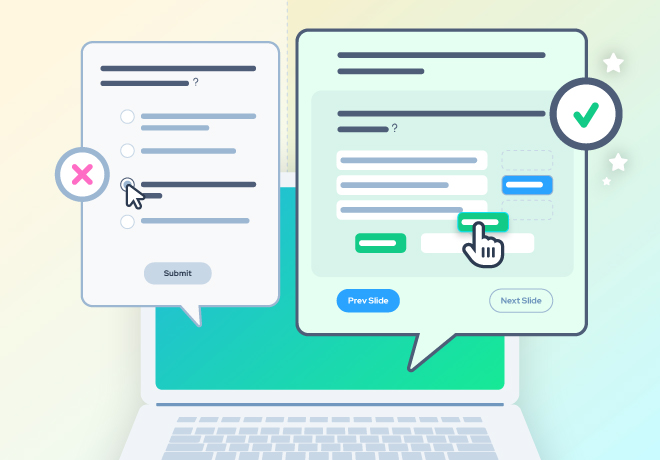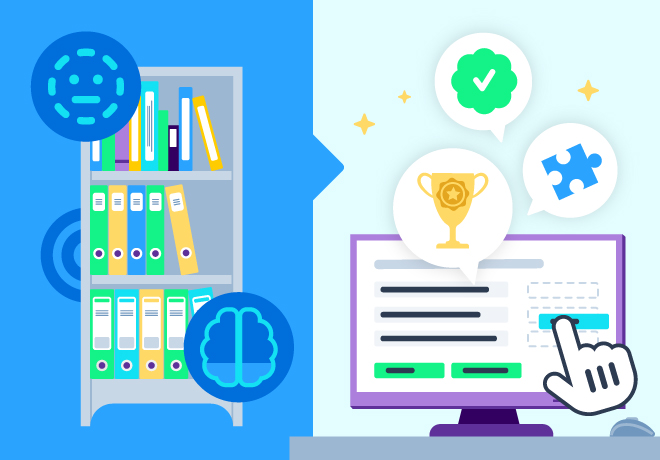
Tailor your eLearning to fit your learners with these instructional design tips

Related articles
Get valuable eLearning insights to your inbox.
Listen to Neovation’s Demystifying eLearning podcast generated with NotebookLM!
Listen to our podcast on your favorite platform!
Creating great eLearning is like creating a bespoke suit. The key is building a pattern specifically for your desired outcomes and your learners.
For eLearning, the idea is to create a course that suits your organization and your learners, when off-the-shelf training doesn't fit. It’s an investment in the development of your workforce and the future of your organization, and an opportunity to create something that is specific to your learning and performance goals.
Identify key learning & performance goals

Before you start creating your eLearning content, you will need to identify your key learning and performance goals — and then decide what type of eLearning will best accomplish those goals. Be sure to choose a format that works for your learners. Consider their work environment, the devices they will use for training, and the amount of time they are able to spend each day or week.
You might consider creating a storyboard to map out the flow and begin to visualize the final product.
Whatever your approach, though, the best practices described below will ensure that your eLearning content is engaging and effective in teaching the critical information and skills.
Cut the fluff
Bespoke training, like a great suit, requires a significant investment. Skimping on the initial process of creating the pattern will result in a product that just doesn't fit.
In the eLearning metaphor, your pattern is your storyboard. When creating it, make sure that you are focused on your learning and performance goals; the storyboard should not simply explain why the eLearning exists.
Pinpointing exactly what you want a learner to know or be able to do following training helps you focus on the essential content — and remove the fluff. Pare down content to what learners need to know to be successful at the defined goals.
If you find that there’s still too much content, consider breaking the course down further, into introductory and advanced modules, or create companion courses on related topics.
That content that you’re not sure is absolutely essential but that definitely isn’t fluff? Move that to a supplemental resources section, where you can link additional documents and other curated resources. For content that includes lots of new terms or concepts, consider adding a glossary tab to provide a quick reference to definitions and concepts you mention in the course.
Provide lots of feedback

In tailoring, there’s an adage, “Measure twice; cut once.” This is a great principle to apply to your eLearning as well. Provide learners with opportunities to “measure” their understanding before they are tested with high-stakes exams, recertification reviews, or on-the-job application of critical knowledge.
Often, eLearning courses end with a quiz. Learners might get feedback on why their responses were correct or incorrect. This is summative assessment and feedback. It’s helpful, but there’s an additional way to provide feedback that supports learning throughout training: formative feedback, with or without formative assessment.
Formative feedback is simply information about a learner’s progress that is provided during learning, rather than only at the end. Using interactive activities with formative feedback builds in repeated reviews and reinforcements to measure learning along the way — perhaps at the end of each chapter or after five to seven slides of dense content.
A key benefit of this approach is that learners can catch their errors early, before they have cemented incorrect facts or processes into their memory. Knowing that they are progressing can also motivate learners to continue engaging, creating a virtuous cycle of increased engagement and continued progress.
Add in opportunities for formative feedback using:
- Non-graded activities (knowledge checks), such as matching or fill-in-the-blank activities, that allow learners to test their understanding throughout the course
- Periodic quizzes — graded or not — that reinforce learning and ensure learners understand key concepts to complete the course
Vary the pace and structure
A bespoke suit is something special and uniquely yours. Your online learning should also reflect the unique qualities of your organization and your learners. Add flourishes that will take it from a basic linear course to something that will engage the learner in the process.
A common error in eLearning course creation is over-reliance on screens of text and still images lined up one after the other. Comprehensive courses that cover complex topics can run to dozens (or hundreds!) of screens. Learners begin to tune out and simply click next, next, next. They’re not engaged — and they’re not learning!
Tailor your eLearning with interactivity, examples, and scenarios that will ring true with your learners. Implement the activities-plus-feedback model mentioned above — as well as building interactivity into the structure of your eLearning course. Additional options, depending on what your authoring tool supports, could include:
- Add branching scenarios, where learners consider a plausible situation that they could encounter on the job and then choose among several possible responses. Allow them to backtrack and see the consequences of all the responses.
- Offer optional content or multiple formats for viewing content. You could create an infographic with a text explanation, for example. Or offer multiple items that enhance the basic content, allowing them to click on one or more options. Or let them choose between a video and a text or game-based approach to covering some content.
Design eLearning for engagement
Pulling together these new elements might seem challenging, as it will introduce new elements into your design and development phases. Creating a storyboard — and updating it as you iron out more details — can save you work and money in the long run, as you can get the design right on paper without making costly development errors.
But it might be easier than you think! Your familiar authoring tools can probably handle the new features. Most eLearning authoring tools do much more than text-and-image eLearning courses. Take advantage of additional features to enhance your courses with branching scenarios, learning simulations, added resources, multimodal learning options, and more.
Improving your eLearning by building in engagement opportunities, including formative feedback, and using a focused structure that ensures content is relevant will pay off in the long run. Learners will be more engaged — and their progress and performance will reflect that deeper participation.
Learning Hub: free resources for eLearning
The Neovation Learning Hub contains many free resources and articles that can help you improve eLearning outcomes at your organization. Continue learning about Instructional Design topics, discover custom instructional design firms, read articles on Custom eLearning Development, or find new eLearning tools to help you with your eLearning initiatives.

An experienced writer, editor, tech writer, and blogger, Pam helps you make sense of learning science and eLearning technology. She provides information you can use to drive improvements in your training effectiveness and ROI.
Become part of our L&D community
We publish a new learning hub article — full of useful, practical topics — weekly.
Not sure where where you want to start? Jump into one of our recently published articles and see where it takes you!








-svg.svg)
-svg.svg)
-svg.svg)
-svg.svg)